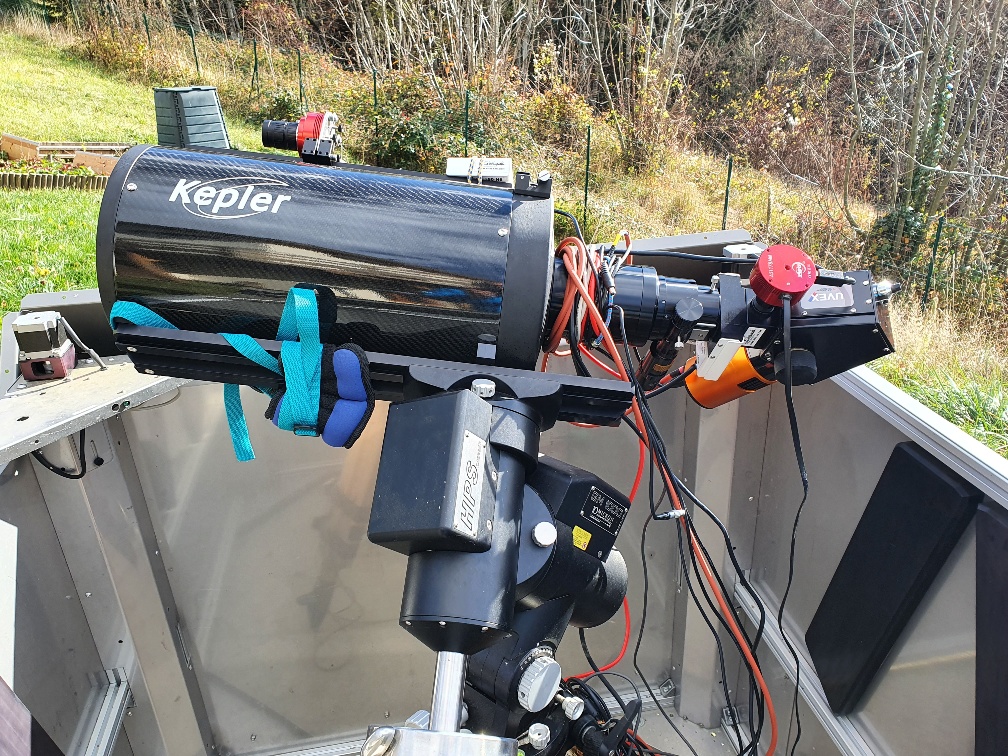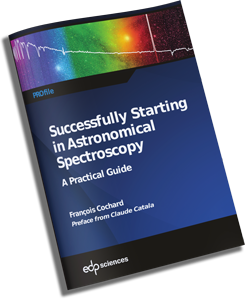UVEX, to write a new page in astronomy
by François Cochard
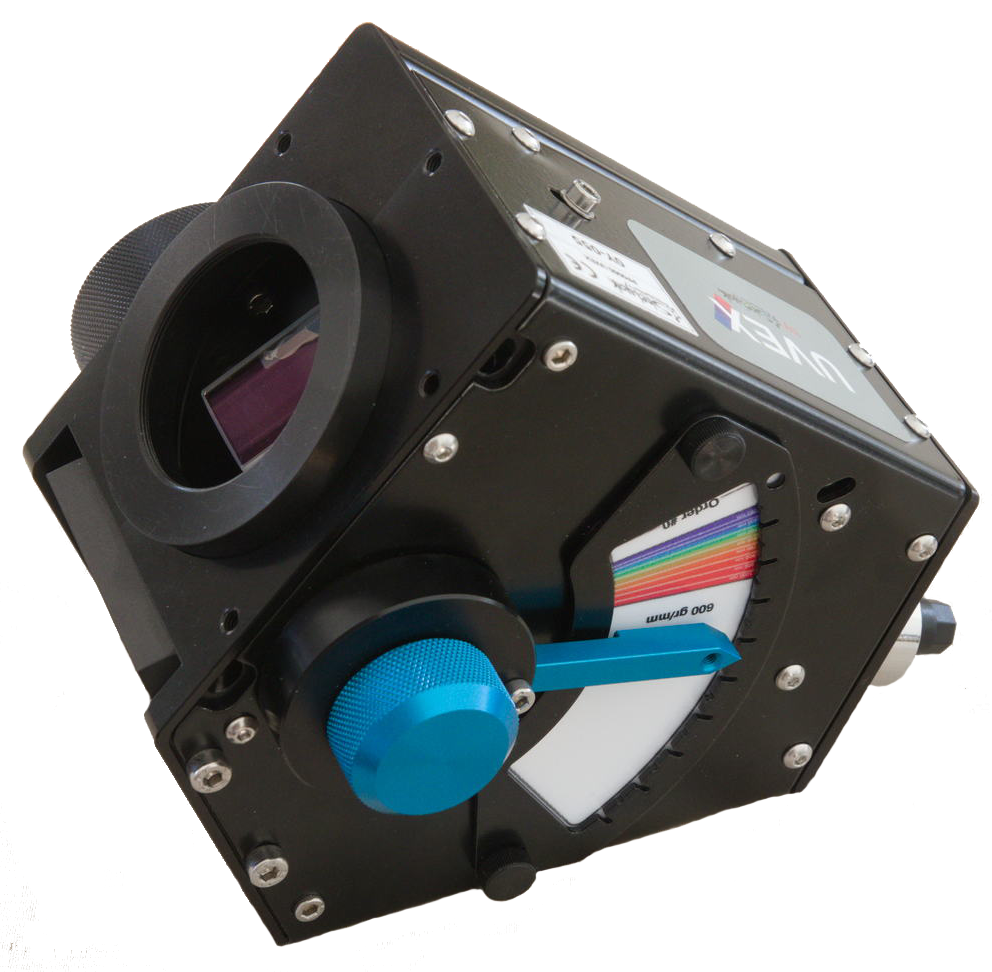
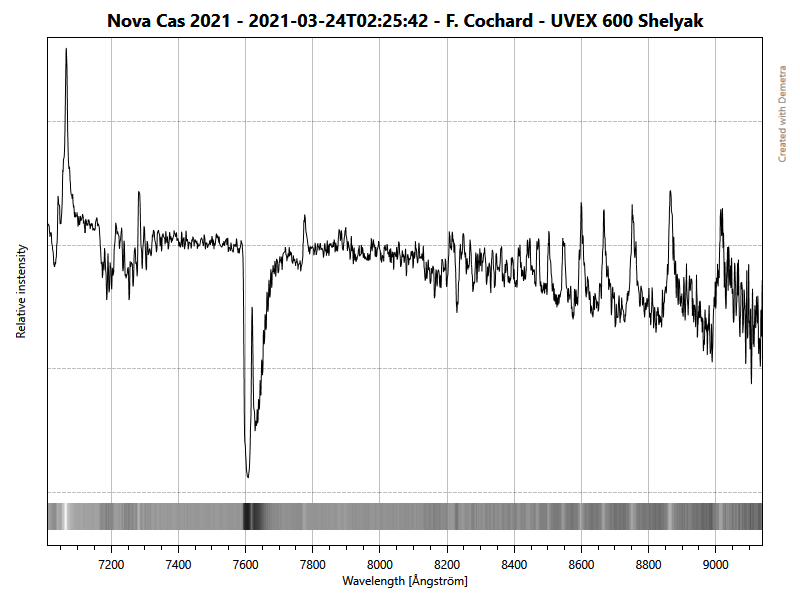
We are happy to announce the arrival of a new instrument in the Shelyak range. This event is important for several reasons.
It’s a sign of the dynamism of the astronomical community, which always pushes the limits of its observations further. We designed it to meet the expectations and suggestions of astronomers – there is passion in this instrument!
Originally, UVEX was designed by Christian Buil, with a team of amateur astronomers in the south of France – for 3D printing (see the project ). The variation that Shelyak offers today is a high quality industrial version; the two approaches are very complementary.
UVEX, it’s first and foremost an instrument that opens up new possibilities on the scientific level. Its achromatism makes it possible to observe in a wide range of wavelengths, going from Ultra-Violet (UV, from 350nm) to Infra-Red (IR, at 1000nm); the latest generation cameras (with CMOS sensors) make it possible to explore these new areas which go beyond the limits of the human eye. If you are familiar with astrophysical issues, you know that there is a lot of science to be done in UV (the field of high energies and violent events), as in IR (field of star and sky chemistry). interstellar medium).

Solar light spectrum produced with a 300 gr / mm grating and a color camera (© Christian Buil)
It is a new generation of instrument on the technical level, to support the evolution of our discipline. This is mainly found on three points:
-
Uncompromising optical and mechanical design for extreme rigidity and stability. All settings (spectrum focusing, grating angle, camera mounting, slot access, grating change) are accessible from outside the instrument. The optics are made to measure to offer the best possible performance.
-
-
UVEX makes the most of new CMOS sensors. It offers a useful image length (without degradation of quality) of 20 mm … the days of the KAF0400 which were 7mm are long gone!
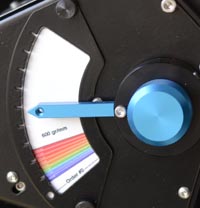
Grating angle adjustment

Focus adjustment
Who is this instrument intended for?
UVEX is clearly aimed at demanding observers, for whom performance and productivity are the goal.
Due to its compactness, it is intended for “small instruments” – say telescopes up to 300 or 400mm in diameter. It can very well be used opportunistically on larger telescopes (observations have been made with C2PU’s 1m telescope at Calern observatory in south of France) – but this will necessarily be at the expense of pure performance (e.g. a large telescope requires to use a larger slit, which reduces the resolution).
UVEX spectroscope installed on an RC8 telescope
Its versatility allows a variety of scientific applications – with a preference for stars if your telescope is very open (the useful length of the slit is all the greater when the telescope is closed – avoid observations of large objects with a telescope at F / 5!).
The merits of UVEX in UV and IR are praised, because this is a specificity of this instrument, but obviously it’s also perfectly comfortable in the visible.
We are often asked the question of the relative positioning of the different instruments in the Shelyak range – which one should I choose for my purpose and my telescope? Here are some answers:
-
UVEX is clearly in the range of “skilled observers”; a range of efficient and ambitious instruments.
-
Within this range, UVEX takes a central place: from now on, it’s the main instrument of the range due to its versatility: interchangeable gratings, large spectral range covered, remote control …
-
In this range, it is surrounded by two specialized instruments: The Lhires III for very high resolution (up to R = 18,000), and the LISA for very weak targets. (see this article about PN with a 1m telescope). If your need is not explicitly in one of these two areas – high resolution or high sensitivity – then consider UVEX first.
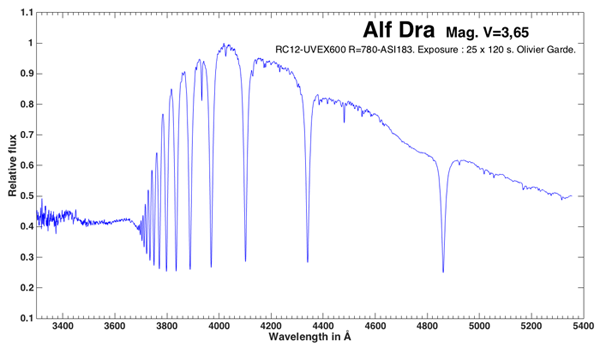
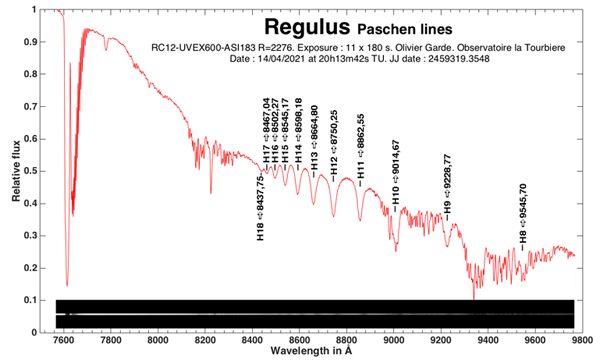
Example of 2 spectra produced with a 600 gr / mm grating: on the left in the near UV, on the right in the near IR. We can see through these 2 spectra all the possible extent of UVEX.
A little bit of technique
The highlights of the UVEX are versatility and achromatism.
The achromatism of UVEX comes from its “Czerny Turner” (CZ-T) architecture: it is a proven solution that only uses mirrors for the collimator and the lens. An achromatic instrument is an instrument whose focus does not depend on wavelength (or color – chroma). A mirror is inherently achromatic, while a lens (or any set of lenses, such as a photo lens) is necessarily tainted with chromatism.
We opted for UVEX with a “crossed” CZ-T architecture, ie the incoming and outgoing beams cross each other. This has little effect on the optical behavior, but it is what allows a particularly compact instrument, and an organization particularly suited to astronomy – because the camera is not overhanging at the end of the telescope, but is on the contrary closer to the tube.
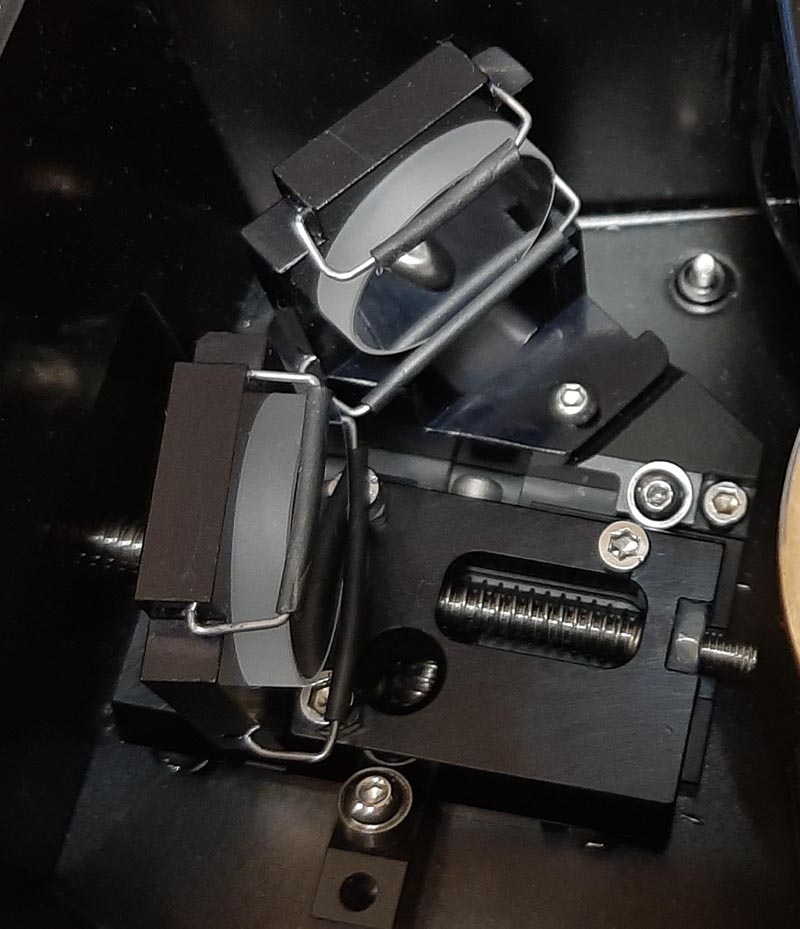
Interior view of the instrument
The UVEX spectrograph is achromatic … so it is behind a telescope itself achromatic that it will give its full capacity. In the current landscape, there are mainly three achromatic telescope architectures: Newton, Ritchey-Chretien (RC) or Cassegrain (pure Cassegrain, not Schmidt-Cassegrain) telescopes. If you have the option, choose one of these three instruments – with a preference for RCs, open at F / 8.
Indeed, the question of the aperture is important in spectroscopy. UVEX is designed for a maximum aperture of F / 5 – which is the case with most Newtonian telescopes. With a telescope open at F / 5, you will not lose any photons by vignetting. But since a CZ-T instrument uses mirrors, this requires working “off-axis” (the outgoing beam cannot be on the same axis as the incoming beam). And that induces a sensitive astigmatism, as soon as one moves away from the optical axis. The consequence is that the instrument is excellent on the optical axis (that is to say if you place your star in the middle of the slit), but the quality deteriorates at the edge of the slit, and that more that the telescope is open.
On a practical level, these considerations translate as follows:
-
If you use a very open telescope, avoid extended objects, and work well on the axis of the instrument (star well centered on the slit).
-
If you need to use a long slit length – to study large objects such as nebulae, Planetary Nebulae (NP), galaxies – then choose a more closed telescope instead; F / 8 is probably the best compromise.
-
It is with an even more closed telescope (such as a Cassegrain, at F / 12 for example) that the spectra will be the most homogeneous along the slit; but the counterpart is then an increase in the focal length, which enlarges the size of the stars at the focus.
The possibility of using a wide range of telescopes and apertures and the first illustration of the versatility of the UVEX. But that’s not all !
-
UVEX is delivered with a 600 gr / mm grating, but several optional grids are available to change the resolution and the spectral range covered.
-
The ability to easily change the angle of the grating allows you to select the observed spectral range, between 350 and 1000 nm.
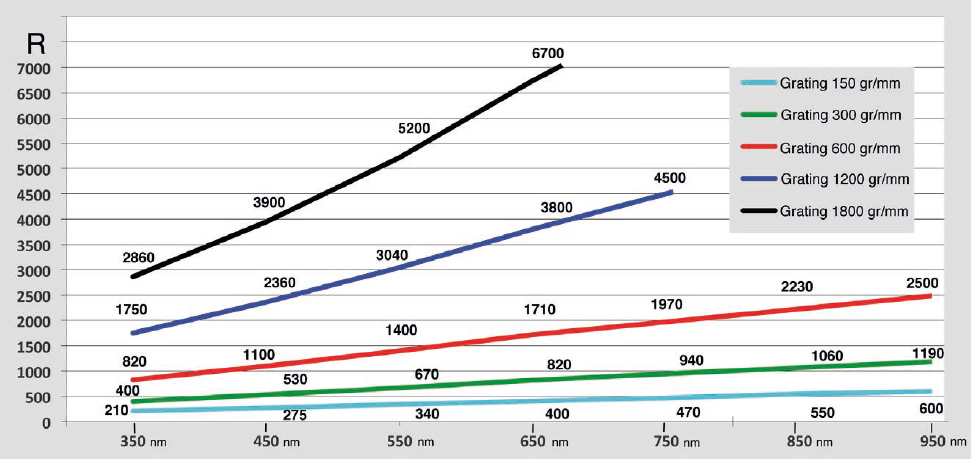
Diagram of resolutions as a function of network and wavelength
The UVEX does not include a autoguiding module or a calibration module, because these modules already exist in the Shelyak range: these are the Alpy autoguiding and calibration modules. It’s quite possible to use UVEX without these modules for experiments on table, in fields far from spectroscopy. It is by thinking of such applications that we made the slot easily removable: it is possible to adapt an input device easily, or even an optical fiber (a connector is available as an option).
For use in astronomy – on a telescope – we strongly recommend the use of the Alpy autoguiding module, to see the star you are observing well. We also recommend the Alpy calibration module, but this is less “necessary” than the autoguiding module: with this module, the spectral calibration is done in a few clicks thanks to Demetra, but there are also other means of ‘calibrate your spectra – this is mainly a question of ease of implementation.
To end this presentation, I would like to draw your attention to two technical points:
-
-
Allowing UV observations at IR is a godsend, but there is still a precaution to be taken: the diffraction grating has several orders of diffraction (with UVEX, we are working at order 1), and there is a risk of order recovery. For example, if you are working at 800nm, you can have a second order overlay at 400nm. Depending on the type of source you are observing, consider incorporating this point. We offer an optional order filter (which cuts at 530 nm) and which mounts behind the slit of the UVEX, but if you need to change this filter often (or remotely), then it’s better to plan to Mount it in a filter holder (or even in a motorized filter wheel) at the front of the slit.
Demetra software to support you
Demetra software has been designed to support you during all your observations, from spectra acquisition to data reduction. Over time, this software has become a benchmark. The goal is clear: simply to obtain spectra of the highest possible scientific quality.
The arrival of UVEX is accompanied by a version dedicated to this instrument; each spectroscope obviously has its specificities. If the general concepts remain the same as for an Alpy or a LISA, you will see new features in the data reduction process: a “CMOS correction” step has been added, and the wavelength calibration step has been added. been enriched (to take into account the rotation of the grating).
In our mind, UVEX is inextricably linked with Demetra for effective daily use. But you obviously remain completely free to use your own tools: neither UVEX nor Demetra locks you into a specific format.
It’s your turn !
We had a lot of fun designing the UVEX. Today we present to you an instrument of which we are proud, and we are convinced that it will accompany you on your own adventures. So we “pass on the torch” to you to make new observations.
We count on you to tell us when you do wonderful things with this instrument: it’s your turn!
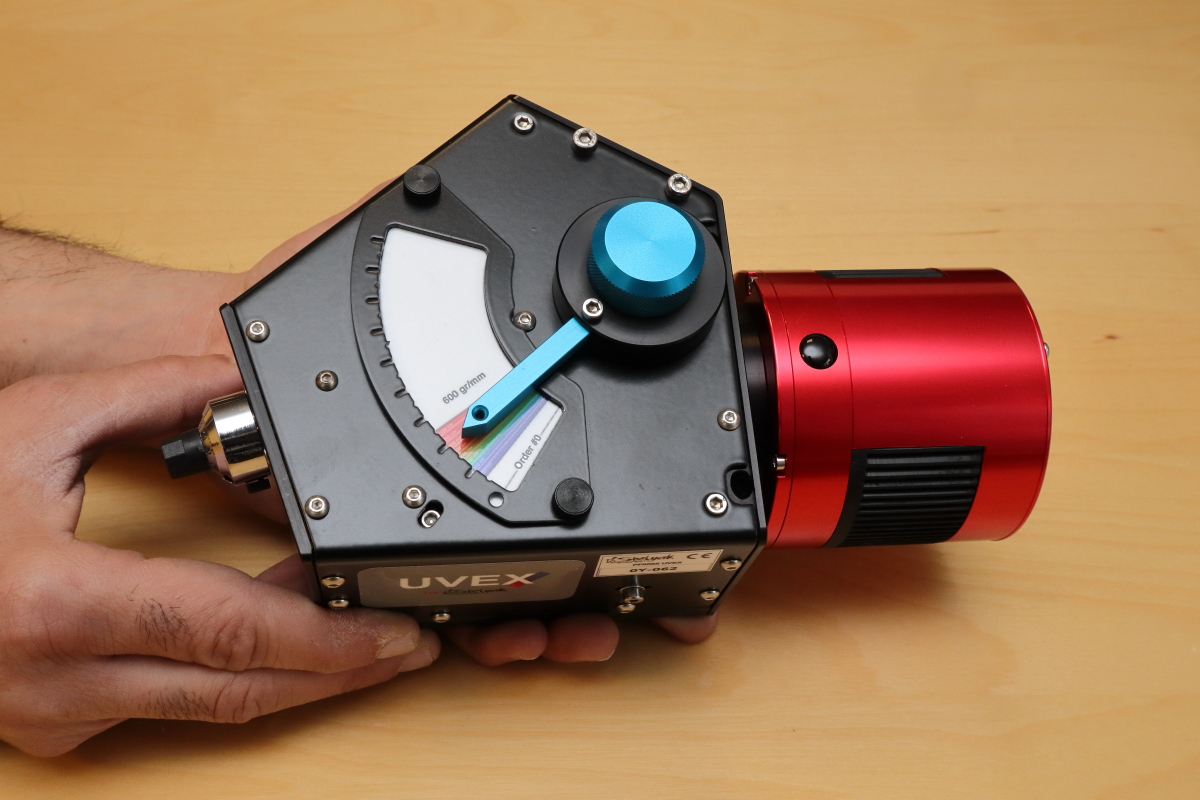
François Cochard, march 2021
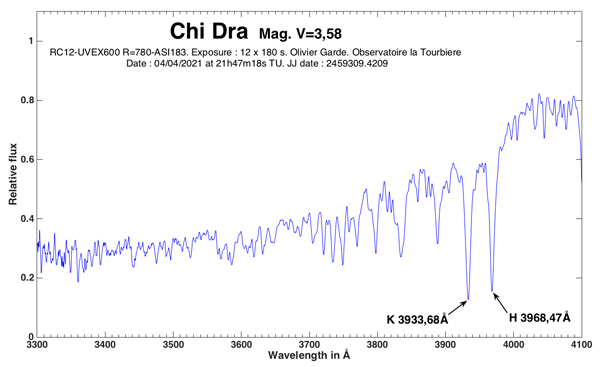
H and K lines of Calcium II with a 600 gr / mm grating

